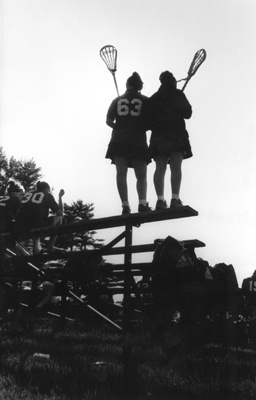All Nonfiction
- Bullying
- Books
- Academic
- Author Interviews
- Celebrity interviews
- College Articles
- College Essays
- Educator of the Year
- Heroes
- Interviews
- Memoir
- Personal Experience
- Sports
- Travel & Culture
All Opinions
- Bullying
- Current Events / Politics
- Discrimination
- Drugs / Alcohol / Smoking
- Entertainment / Celebrities
- Environment
- Love / Relationships
- Movies / Music / TV
- Pop Culture / Trends
- School / College
- Social Issues / Civics
- Spirituality / Religion
- Sports / Hobbies
All Hot Topics
- Bullying
- Community Service
- Environment
- Health
- Letters to the Editor
- Pride & Prejudice
- What Matters
- Back
Summer Guide
- Program Links
- Program Reviews
- Back
College Guide
- College Links
- College Reviews
- College Essays
- College Articles
- Back
Girls in Contact Sports
Most sports have both a men’s and women’s league and many of these leagues play the game roughly the same way. Yet, for some, the way the game is played can differ greatly between men and women. One of the major differences between these sports is physical contact between the players -- or a lack thereof. Many times when a male sport involves contact, such as hockey or lacrosse, the contact will be removed in the women’s version. Not only is this an insult to the capabilities of the female athletes, but it also fundamentally changes the game.
Rules for a sport should not change on such drastic levels due to a person’s sex. The only difference between men’s and women’s teams should be just that: one is for men and the other for women. Every aspect of a sport is important to the way that it is played. Removing something for one league and not another changes the entire sport.
Starting at 8U, or under 8 years old, some contact is introduced into boys lacrosse. Stick checking is introduced before major aspects of the game, such as offsides and faceoffs, which are introduced later on. In girls lacrosse, modified checking is introduced at the 12U level after the players have learned most aspects of the game. For boys, body checking is introduced at the 14U level, or when the boys are 13 years old. Due to this level of contact, boys are required to wear not only helmets but also a mouthpiece, gloves, a cup, shoulder pads, and arm pads. This is a stark contrast to the girls who even at the highest levels only require goggles and a mouthpiece. If the different rules are not proof enough that lacrosse is played very differently between boys and girls, one just has to look at the players to see the difference.
Young girls interested in trying out for a sport that involves physical contact, typically join the girl’s team and find themselves playing what feels like a completely different sport than the boys team. Experiences like this happen all the time; it happened to me when I was younger; I had watched my brother playing lacrosse and wanted to play myself. When I joined the team it didn’t even feel like the same sport, and I ended up quitting. I felt robbed of the experience and still do. Some girls want to play the contact version so bad that they try and join the boys team, with cases like Sara Maras, Sam Gordon, or Auburn Roberson. Yet this can also be hard for female athletes. Not only will these girls have to work even harder to earn their place on the team, but it can also bring about bullying and in extreme cases legal action. This is not only upsetting but it also can affect the way young girls view themselves not only in correspondence to their male counterparts but also as athletes.
Society tells girls from day one that boys are stronger, tougher, and more athletic. By eliminating contact in our girl’s sports these stereotypes are being enforced. For those who believe that girls would only get injured if they were to have body contact, one need only to look at what sport has the most injuries: volleyball. This non-contact sport brings in the most injuries a year at 14,304. The fact of the matter is injuries are a part of sports, and whether the sport is contact or not, players are going to get injured. With proper training and equipment, these injuries can be minimized to the extent of that which they are in the male leagues.
It has been shown in sports, such as rugby, that men’s and women’s leagues can function under the same rules without removing physical contact. The leagues require the same skills and both men and women get the same thing out of the game -- camaraderie, team spirit, adrenaline rush -- whatever it is the player joined for in the first place. Rugby provides a positive example for what can happen when the teams are treated as equals.
Young girls interested in contact sports should be given the same opportunities as young boys. Rules of a game shouldn’t change just because a girl is playing instead of a boy, nor should she have to go and join the boys team just to be able to play the sport that she is interested in. Giving girls the opportunity to play contact sports the same way as the boys would not only make the game more fair but it would establish the self confidence of the girls playing by allowing them to play on the same level.

Similar Articles
JOIN THE DISCUSSION
This article has 0 comments.
